

FROM FUNDAMENTALS TO IMPACT
Editor: Jennifer Donovan
Design & Illustration: Michael Lewy
Writers: Grace Chua Katie DePasquale
Photography Credits:
LIDS Student Conference photos by Dawn ColquittAnderson. Photos of Richard Lay, Marija Ilic, the LIDS Thanksgiving social, and the LIDS Commencement Reception by Francisco Jaimes. Photo of Ali Jadbabaie by Ian MacLellan. Photo of John Tsitsiklis by Donna Coveney. Photo of Philippe Rigollet by Bryce Vickmark. Photo of Qingkai Liang by Emma Wang. Photo of Alexander Rakhlin by The Wharton School.
Massachusetts Institute of Technology Laboratory for Information and Decision Systems
77 Massachusetts Avenue, Room 32-D608
Cambridge, Massachusetts 02139
http://lids.mit.edu/
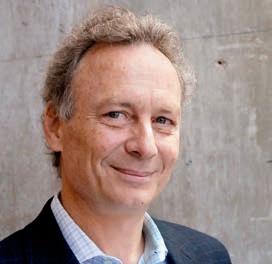
A Message from the Director
It is a pleasure to introduce the latest edition of LIDS|All. Over the past year, LIDS has thrived both within the lab and beyond: Our students and faculty have received many prestigious awards. We have hosted workshops on topics from power systems to the Internet of Things. We have gained momentum in our student activities, enriching life at the lab. And we are continuing our initiatives to foster better connections with the alumni community. On the educational front, LIDS faculty have played a central role in launching, under the umbrella of IDSS, an online MicroMasters program in Statistics and Data Science.
The intellectual community at LIDS keeps growing, as well — growth that has been facilitated in many ways by our relationship with IDSS, which continues to broaden and enhance the impact of our community and our research. I would like to take this opportunity to welcome Suvrit Sra (previously a Principal Research Scientist) into his new capacity as an Assistant Professor, and Sasha Rakhlin (formerly a Visiting Professor), who joined MIT and LIDS as an Associate Professor, both of them exceptional scholars in the broad areas of machine learning and data science. Luca Carlone (previously a Research Scientist) also joined the ranks of MIT faculty this year as an Assistant Professor. His research centers on computational perception and autonomy for mobile robotics platforms, such as self-driving cars and autonomous drones. In addition, Cathy Wu accepted an Assistant Professor position with MIT and will start a year from now, with a focus on intelligent systems and machine learning for critical societal infrastructures such as transportation systems. Finally, Marija Ilic, a world-expert on power systems, has been appointed a Senior Research Scientist, the highest level of MIT research positions. Additionally, we are strengthen-
ABOUT LIDS
The Laboratory for Information and Decisions Systems (LIDS) at MIT was established in 1940 as the Servomechanisms Laboratory. It is an interdisciplinary lab, home to about 150 faculty, students, and research staff from many departments and centers across MIT. Current research focuses in four broad areas: networks; statistical inference and machine learning; optimization; systems theory, control,
ing the ties between LIDS and a number of faculty from other laboratories across MIT, whose intellectual agenda aligns with our own.
Our growth is not an accident. Many of the spectacular recent advances in data science and machine intelligence are all about systems that process information, and then make inferences and decisions. LIDS-type research provides much of the methodological core that underlies such developments, illustrating, once again, that despite tremendous changes in the technological landscape, many of the fundamental ideas and tools are timeless.
In this issue you will find several interviews that speak directly to the value and robustness of LIDS-style research — including from graduate students Jehangir Amjad, whose work applies Robust Synthetic (statistical) Control to a unique range of applications, and Qingkai Liang, who studies the fundamental performance limits of networks. In addition, you will read about Prof. Ali Jadbabaie’s work using systems theory to model and predict sociopolitical phenomena; Prof. Philippe Rigollet’s wide-ranging research in statistics; alum Hoda Eydgahi’s path to Silicon Valley; our new Administrative Officer Rich Lay; postdoc Stefania Bartoletti’s research on passive path tracking in GPS-challenged environments; and alum Emilio Frazzoli’s ventures (both academic and industrial) in autonomous vehicle design.
I hope you enjoy reading these highlights of our activities, and learning more about the people and research that make LIDS such a special place.
Sincerely,

John N. Tsitsiklis and autonomy. The intellectual culture at LIDS enables students, research staff, and faculty to contribute to both fundamental methodological research as well as to a broad range of high-impact application domains, from communications and cyberphysical systems to data science and social networks.

The Mathematics of SOCIAL CHANGE
By Katie DePasquale
Ali Jadbabaie, the JR East Professor of Engineering in the Department of Civil and Environmental Engineering, associate director of the Institute for Data, Systems, and Society (IDSS), and director of the Sociotechnical Systems Research Center (SSRC), explores research topics as varied as his titles — using the foundation of systems theory to examine everything from the dynamics of sociopolitical change to the impact of fake news. His approach to his work is a holistic one, and represents a relatively new way of thinking about systems engineering: one that sees it as applicable to many of society’s most important, complex questions, and that is robust enough to include the human element in the equation.
Ali is a control theorist by training. He received his undergraduate degree from Sharif University of Technology in Tehran, Iran (a school modeled on MIT), and moved to the United States to get his master’s degree in electrical and computer engineering at the University of New Mexico. He went on to get his doctorate in control and dynamical systems from the California Institute of Technology, and took a faculty position at University of Pennsylvania in 2002 (following a stint in between as a postdoc at Yale). Continuing on the path he chose while a postdoc, Ali began his career at Penn focused on problems of formation control and swarming – that is, how you can control a large group of spatially connected agents to complete a task, such as forming a specific con-
figuration, as in a school of fish or flock of birds. However, it was while he was at Penn’s General Robotics, Automation, Sensing, and Perception (GRASP) Lab in 2008, working mostly on getting groups of robots to move en masse, that he found himself increasingly interested in how collective behavior emerges in networks of human agents that are interacting to form collective opinions and actions. This led Ali to questions with broad implications for the kinds of problems systems theory might be used to solve: “What can you learn about the behavior of the overall system from the structure of the network and from individual dynamics? How do people make decisions in groups, how do they update their opinions, and how do they make decisions by combining their private observations and opinions, and the actions of others around them?”
With this shift in perspective, the next logical step was for Ali to incorporate social sciences into his engineering work — specifically the quantitative aspects of disciplines like economics or sociology, where exciting new research opportunities had been (and continue to be) opening up, thanks to the massive proliferation of data and major advances in data science.
Now studying collective autonomy alongside social networks and related phenomena like viral marketing, Ali found himself “in the right place at the right time” when, in 2014, he arrived at LIDS for a sabbatical. “That year
[there was] discussion around creating a new entity that combined information and decision systems, statistics, and social sciences” in a new and intriguing way — a way that mirrored the direction he had been taking his research. This entity would become IDSS, which nine months into his sabbatical, Ali was asked to stay on and help launch, an opportunity that he enthusiastically accepted.
Ali has officially been at MIT since 2016, and thanks to strong connections to LIDS faculty throughout his career, he has found MIT a natural home. The LIDS connection is particularly relevant as LIDS is a major research lab within IDSS, making its faculty much of IDSS’s core, as well as key collaborators in Ali’s work. Having LIDS faculty in the same space as statisticians and social scientists has allowed Ali’s research to be truly and more easily interdisciplinary, leading to more openness and innovation.
Describing some of the many projects on which he’s currently working, Ali says, “We have a large, multi-investigator, multi-disciplinary project that is in its final year on the evolution of social norms and the dynamics of sociopolitical change.” This project includes him, several LIDS faculty, and faculty from economics and political science. “The purpose of it is to combine the mathematics of social interaction and interacting systems and [things like] collective behavior with sociopolitical
phenomena like uprisings, the Arab Spring, and political unrest and so forth.” One method of gathering data on social interaction that the team has used, for example, is studying call records from Yemen. These records are used “to establish behavior of social networks” to see if and how communication patterns change during a crisis; researchers can examine who talks to whom, how frequently, and for how long, and then that information is used to make inferences about that country and what life there is like by looking at a piece of the digital footprint.
Other recent and ongoing projects in which Ali is involved include topics such as decentralized and online optimization, research on the fundamentals of learning for DARPA, and nonlinear and non-complex optimizations. He considers himself lucky to have been part of so many different research projects, and calls it “an exciting time” to be at MIT. With so much work to do and so many concurrent projects, he tries to unwind by playing classical guitar, a hobby he hasn’t lately had as much time for, and by watching movies. His other hobby is following politics and the news, and as a selfdescribed “political buff,” his newest project, which is in its beginning stage, matches up perfectly with this passion.
Along with multiple LIDS and MIT colleagues, Ali aims to study and “understand issues related to group polarization and information,
and the spread of fake news.” The researchers are hoping to find and interpret hard evidence of the impact of fake news and other problems related to the fragmentation of online social networks. Ali points out that when they first started to form, online social networks were meant to democratize information and thus help the world become more equal. “The world would become flat, [we would become] closer to each other.” Instead, as has become obvious in the last couple of years, these networks “allow people to create these bubbles around themselves of like-minded individuals.” For instance, he explains, although people may involve many others in a particular discussion, their desire for and focus on social media “likes” colors the conversation significantly, leading to less nuance and more polarization.
Measuring in a rigorous, scientific way how this affects our social and political discourse could prove crucial to how we move forward in our interactions with each other through our online social networks. “The first step,” Ali says, “is to understand and measure the phenomenon [of fake news], to see, if any, what type of impact it could have had. The next step is to investigate what policy prescriptions we might be able to provide, what changes need to be made in our social discourse, in how we spread information, what incentives one can provide to rectify some of the issues that have been brought to bear by what we’ve seen in the past few years.”
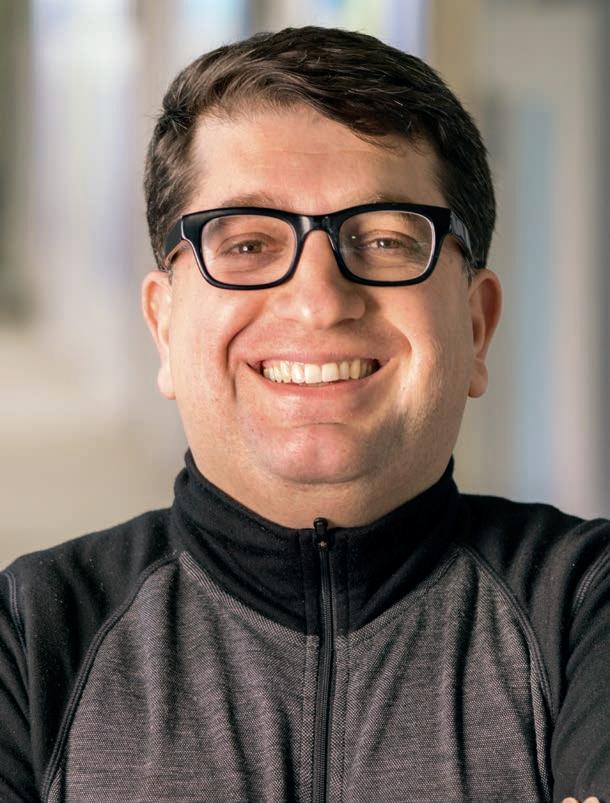
This is exactly the kind of important, impactful, and complex societal problem IDSS was created to solve. Powered by the fundamental methodologies explored at LIDS, Ali and his collaborators are well-positioned to lead the way.

THE UNWRITTEN RULES OF THE ROAD
By Katie DePasquale
Emilio Frazzoli is fascinated by the unwritten rules of the road. His accomplished career is a testament to this. In both academia and industry he has focused on autonomous vehicles, transportation networks, and the theory and algorithms behind them — winning many awards for his work along the way, including the IEEE Kiyo Tomiyasu Award and the IEEE George S. Axelby Award, prestigious honors in the field.
In the latest of his successes, the startup Emilio co-founded in 2013, nuTonomy, was acquired last year by industry powerhouse Aptiv (formerly Delphi Automotive). Like Uber, Tesla, and Google, nuTonomy has been working to create driverless cars that are safe, economical, environmentally friendly, and designed for use in urban areas. Once an underdog in the race to develop this technology, nuTonomy has since emerged as a frontrunner, partnering with companies such as Lyft and running test programs for driverless taxis in Singapore and Boston.
Behind it all is Emilio, contemplating the subtleties of how humans operate vehicles. As he points out, “There are a lot of nuances in the way that we want cars to behave that are not completely captured by what we know as the rules of the road.”
and Astronautics, Emilio continued in academia, teaching first at University of Illinois at Urbana-Champaign, then at the University of California, Los Angeles, returning to MIT as a professor at LIDS from 2006 until 2017. Although he now spends about 80 percent of his time at nuTonomy as CTO and chief scientist and 20 percent of his time as a professor at the Swiss Federal Institute of Technology in Zurich, he’s also a visiting professor at MIT, supervising several graduate students. It was during his time as a LIDS professor that Emilio began the work out of which nuTonomy grew — work on how to manage large groups of robots that he conducted with his students. The central question of that work, he explains, was “how do you control a robot, that is actually a car, when it’s driving in an environment that’s shared with other cars, pedestrians, bikes…. you have a potentially very dangerous machine that has to share the space with humans.” Ensuring the safety of such interactions became the basis of nuTonomy’s mission, which he and Karl Iagnemma, another MIT alumnus, launched together. Emilio says that Delphi’s goals “are very much aligned with our goals,” so one of the many positives of the acquisition has been that it allows Emilio to continue research and development that is meaningful to him, but now with expanded resources.
An MIT alumnus who graduated in 2001 with a Ph.D. from the Department of Aeronautics
More specifically, Emilio’s current work involves building the technology needed to create and run large groups of “robot taxis” in urban
locations across the globe — and, importantly, understanding the societal impacts of such a project. “How many of these taxis would you need to serve the entire city of Boston, or Singapore?” Emilio asks. “What would it mean in terms of demand for parking? What would it mean for personal mobility? What does it mean in terms of cost and accessibility?” In addition to these questions, he’s considering thornier, less clear-cut issues that speak to the social responsibilities that autonomous car companies must contend with — perhaps the thorniest of these being issues of public safety and liability. Although he believes there is “tolerance for some accidents” among the general public as driverless cars transition from an idea to a reality, he also shares some of the concerns that people have raised. He cites the recent case of Uber’s autonomous car in Arizona that struck a woman who was crossing the street outside of a crosswalk with her bicycle: “The police chief in Tempe, Arizona, stated that ‘Uber would likely not be at fault in this incident,’ because the woman was crossing the street where she shouldn’t have. But are you really happy with autonomous cars that do not attempt to avoid collisions with jaywalkers? Of course not!” The problem is that expectations of appropriate behavior on the road don’t necessarily match up with what robot cars are told to do if they are programmed to follow the letter of the law. The “good behavior” that humans naturally tend to practice when driving is rooted not only in the primary goals of trying not to hurt others while
following the rules, but also in things like safeguarding their own lives and protecting their cars from damage. Of course, robots don’t have a natural inclination to do any of this, which is why it’s so crucial that the people creating the cars keep such factors in mind when designing the software for autonomous vehicles.
The best way to do this, Emilio suggests, is by bringing in the entire community on the decision of how autonomous cars should behave when it comes to these types of ambiguous situations, where the written rules of the road don’t completely account for the unwritten ones. He is developing the framework to write the logic that makes the decisions for the car, but he wants the public, the authorities, and industry stakeholders to weigh in and contribute to customizing it to the particular needs of each community. He sees that as the most equitable and ethical way to move forward, and as one that makes good business sense. Referring again to the recent Uber accident, he talks about the fact that Uber settled with the woman’s family, before the completion of any official investigation on the case. He says, “Uncertainty about the interpretation of the rules of the road is a risk I don’t want” as a business, partly because the benchmarks can change. The current rules of the road have many “gray areas,” which require a human’s discretion to resolve. A judge can give one ruling, and later another judge can contradict that ruling, and in the meantime if a company has deployed
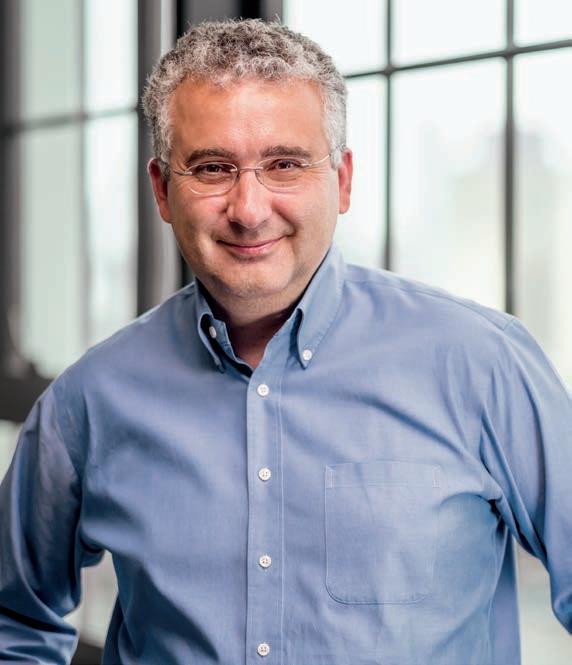
thousands of vehicles, they would have to recall them and rewrite software to correspond with the new decision. “For me,” he concludes, “the key point is we have to identify all these gray areas and what to do if [a car] is not behaving [the way the community wants it to].” This is his biggest challenge right now: navigating the best way to handle the increasingly complex situations that will arise as autonomous cars become more integrated into society.
very well-known situation, in which the road conditions, traffic, and weather are specified and understood, it’s easier to tackle the technological challenges of driverless cars and offer a service that people are interested in using, whether because it’s better for the environment, cheaper, or more efficient. Once some success is had in those set circumstances, nuTonomy can widen their plans to include other situations and services. Some of these developments are likely in the near future, others are not. “If you’re asking me when will you be able to go to a car dealership and buy a new autonomous car, probably [it will be] another 15 to 20 years. If you’re asking me when you will be able to go somewhere in the world and actually be able to summon an autonomous car that takes you to someplace specific that you want to go, closer to two years,” he says.
For Emilio, the rollout of autonomous cars is at the moment a question of scope. With a
In the meantime, nuTonomy has already piloted autonomous cars in Boston and is continuing its work in Singapore with its fleets of driverless taxis. As Emilio splits his time between the business and academic worlds, travel, and family life, he’s happy to continue working with students at MIT. “Everybody was way smarter and more clever than I am, but that’s a good thing,” he jokes when remembering his own days as an MIT student. “It’s a very supportive environment.” Thanks in part to that support, and his time at LIDS, he’s at the forefront of his field today.

SIPPING FROM THE FIREHOSE
By Grace Chua
There was a time when, as a young assistant professor, Philippe Rigollet would finish one project and cast about for the next one. Then he arrived at MIT.
“After two months here I knew this was never going to happen to me again,” he says. It’s often said that the pace and challenge of studying at MIT is like drinking from a firehose, but in Philippe’s telling, the same is true of doing research here. In just the last three years, Philippe, who came to LIDS in 2015, has begun to explore statistical techniques for: analyzing microscopy images, working out the trajectory
It’s often said that the pace and challenge of studying at MIT is like drinking from a firehose, but in Philippe’s telling, the same is true of doing research here.
of how cells grow, and for averaging geometric objects. This isn’t just dabbling, either. Each project contains underlying statistical questions that hold deep interest for Philippe, and that he is trying to tease apart.
Take the Nobel-Prize-winning microscopy technique called cryo-electron microscopy (cryoEM), for instance. The imaging method allows scientists to study biological molecules such as viruses and proteins, and even to see how they move and change as they do their jobs. The
key is that samples are frozen rapidly in a random orientation and a picture is taken. Then, mathematical techniques combine two-dimensional images shot from many different directions to compile a more complete 3D picture of the molecule. This, though, leads to a problem that is “inherently noisy,” Philippe explains. “How many pictures do you need to take of a molecule before you can learn its structure?”
Current methods of mathematical analysis rely on several assumptions about molecular behavior in order to answer this question. However, in the next phase of their research, Philippe and his colleagues would like to test these assumptions, using the theoretical methods they have developed, on data from real cryo-electron microscopy — something that might become possible once cryo-EM instruments at the new MIT.nano facility are up and running this Fall.
Philippe, who is originally from France and completed his graduate training there, started his career at Princeton, in the department of Operations Research and Financial Engineering. It turned out not to be a great fit for a statistician interested in computer science. Coming to MIT, he felt, he had nothing to lose. “I thought, even if I come for only a few years, MIT is the place where I can get what I need to get things done,” he says.
When he joined LIDS, he was one of the early hires in the effort to grow the new Statistics and Data Science Center (SDSC), which is part
of the Institute for Data, Systems and Society (IDSS). SDSC consolidates cutting-edge statistics and data science research at MIT, serving as a focal point for a statistics community found across many different departments and labs.
“LIDS’ historical strength in applied probability is naturally connected to statistics,” Philippe says. “We use the same tools and speak the same language and it’s only natural that LIDS has now several PIs working in statistics and data science.”
From his compact, sunny office in the mathematics department, overlooking a busy stretch of Memorial Drive, Philippe also works on what’s called high-dimensional statistics. In high-dimensional data, each data point represents many different values – think of a single patient information snapshot that contains a patient’s weight, blood pressure, temperature and so on, or a single sample that contains thousands of expression levels of different genes. In this field, the problems he studies lie right at the intersection of statistics and computer science: “One of the main questions I’m interested in is optimality: if you want to achieve a certain precision [of calculation], how much data do you need, and how well can you do with methods that are constrained to be computationally efficient compared to another method?”
Other theoretical statistics problems that have caught Philippe’s attention include questions in optimal transport, for working out the trajec-
tory of how cells grow; and in geometric data analysis, to average geometric objects, a useful way to make computer graphics smoother and more realistic.
For the former, he works with Broad Institute computational biologist Professor Aviv Regev to understand why a cell might become, say, a liver cell as opposed to a kidney cell, and how different cell types interact with the other cells around them to become what they do. Is it possible to couple these points in space and time? How can their unique trajectory from one state to another be worked out? Because scientists can’t observe populations of cells developing in real-time, the next best thing is to use statistical methods estimate how that development happens.
In the latter, Philippe works with MIT Computer Science and Artificial Intelligence Lab (CSAIL) Assistant Professor Justin Solomon on manipulating geometric objects. Here, again, each data point or unit is a population with many values – in this case, a shape or a scene. “We want to understand what the average of populations is for example,” Philippe explains. For instance, you can interpolate between shapes to smooth out 3D graphics, or impute color palettes to scenes — taking a Boston winter scene and using those colors on a scene of a Jamaican beach, for example. This is especially useful in teaching computers to recognize images with deep learning, as information about the overall geometric structure of an image
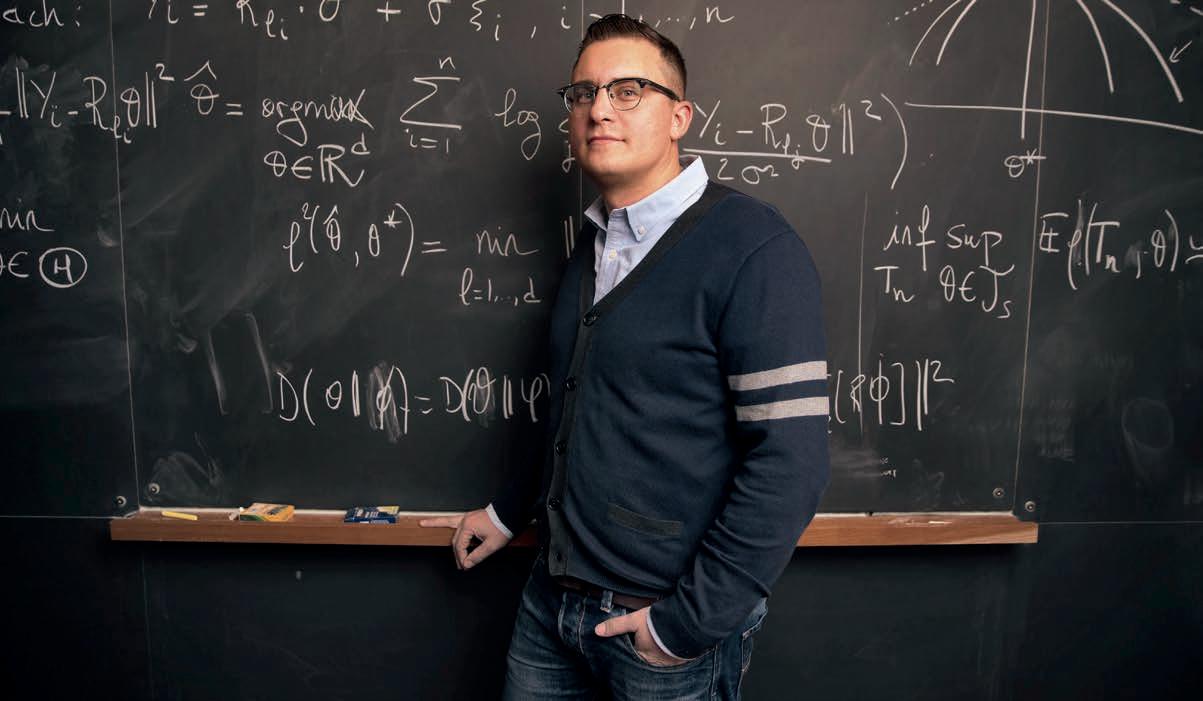
might be lost when the image is fed into a deep neural network.
In all of these problems, Philippe says, “there’s really deep and interesting mathematical theory that allows me to understand what is going on at a deeper level and have an impact on methods.”
So where and how does he find these interesting mathematical problems, and what catches his attention? Some ideas come from attending
talks or talking to colleagues and catching up on their work. But it’s really serendipity, Philippe says. “It’s like asking, ‘How do you choose a painting that you like?’ I don’t choose a painting that I like. I walk into a museum and see a painting that I like. And I cannot explain to you necessarily why I prefer that painting. In a way, it’s a little bit like this. I’m a windowshopper, and MIT is a great place for that,” he says. “I think I’m getting more and more curious as I get a bigger and bigger picture.”

Solving Statistical Problems in Cricket
By Katie DePasquale
Jehangir Amjad has done something few people can: found a way to combine his favorite sport with his work. A longtime cricket enthusiast and player, he’s currently tackling an important statistical problem in the game — how to declare a winner when a match must end prematurely, due to weather or other circumstances. Given cricket’s global popularity, and the fact that matches can last for several hours, it’s a problem of great interest to fans and players alike. For Jehangir, it’s also a project that incorporates his passion for operations research. And LIDS has been the perfect place for him to explore it.
Jehangir’s path to MIT was circuitous. Born and raised in Pakistan, he received a scholarship to complete his last two years of high school at the Red Cross Nordic United World College in Norway. Along with the school’s 200 other students, who came from over 100 countries, he studied, made personal and professional connections, and learned how to live with people of many different cultures during his time there. He then returned home to teach for a year (following in the footsteps of his parents, who are both professors), before attending Princeton for a B.S.E. in electrical engineering. He graduated in 2010, and assuming he was finished with school, went to Microsoft to be a product manager. After several years there, though, he felt restless. Realizing that he’d found himself increasingly drawn to data science and machine learning since starting at Microsoft, he figured he could either stay in the tech industry and learn more about these fields
on the job, or “go back to school to master the mathematical nuances of this field.” He chose academics and came to MIT in 2013 as a graduate student in the Operations Research Center. Here he has collaborated frequently with LIDS students and researchers, under the supervision of LIDS professor Devavrat Shah.
Because Devavrat is also a cricket fan, he and Jehangir had been discussing the cricket problem for years, although Jehangir didn’t land on his research project immediately. In fact, the theory that he is now applying to the cricket problem — robust synthetic control — is mostly used in economics, health policy, and political science. But because all of his work is interdisciplinary, he was able to see how to connect them. “A lot of what we train on [at LIDS] is the methods, but the applications are and should be very diverse,” he says.
The current standard for international cricket games is to use the Duckworth-Lewis-Stern (DLS) method, created by British statisticians in the mid-1990s, to determine the winner when a game has to be called early. Jehangir is viewing this as a forecasting problem. He says, “We aren’t just interested in predicting what the final score would be; we actually project out the entire trajectory for every ball, we project out what might happen on average.” He has used the robust synthetic control method to propose a solution to the forecasting problem, which has also led to a target revision algorithm like the DLS method. Having backtested their cricket results on many games, they
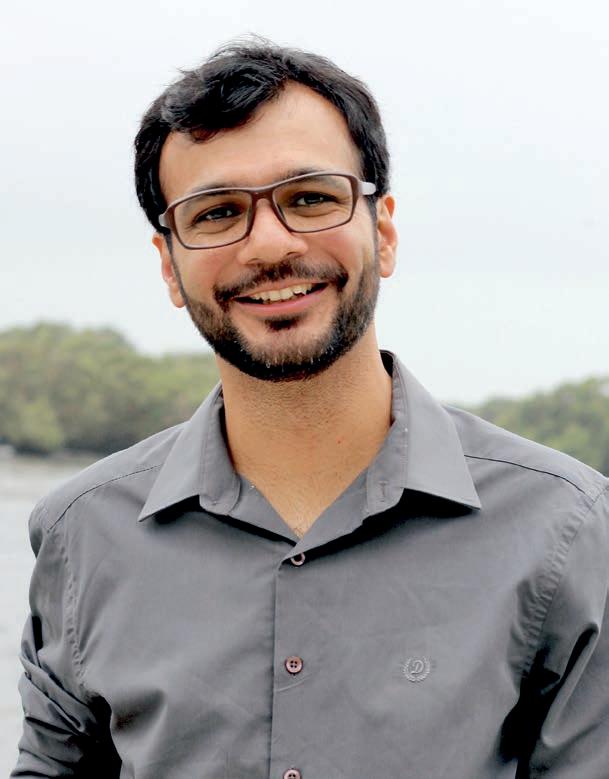
are confident in this approach and are currently comparing it to the Duckworth-LewisStern method, planning, he says, “what statistical argument we can make so that we can hopefully convince people that we have a viable alternative.”
Broadly, synthetic control is a statistical method for evaluating the effects of an intervention. In many cases the intervention is the introduc-
tion of a new law or regulation. Jehangir explains: “Let’s say that ten years ago, Massachusetts introduced a new labor law, and you wanted to study the impact of that law….this theory says you can use a data-driven approach to come up with a synthetic Massachusetts, one that that mimics Massachusetts as well as possible before the law was in place, so that you can then project what would have happened in Massachusetts had this law not been introduced.” This creates a useful comparison point to the real Massachusetts, where the law has been in place. Placing the two side-by-side — the synthetic Massachusetts data and the real Massachusetts data —gives a sense of the law’s impact.
Jehangir and his collaborators have developed a robust generalization of the classical method known as Robust Synthetic Control. In examining a problem this way, it turns out that limited and missing data do not become insurmountable obstacles. Instead, these sorts of difficulties can be accommodated, which is especially useful in the social sciences where there may not be many common data points available. Continuing his example, Jehangir says, “the method is about using data about other states…to construct a synthetic unit. So, specifically, coming up with a synthetic Massachusetts that ends up being 20% like New York, 10% Wyoming, 5% something else — coming up with a weighted average of those. And those weights are essentially what is known as the synthetic control because now you’ve fixed those weights and you’re going to project
that out into the future to say, ‘This is what would have happened had the law not been introduced.’” Eventually, as research continues and more data becomes available to add to the synthetic unit, the accuracy of the results should improve.
Jehangir has used robust synthetic control in this more traditional way, as well. One of his other projects has been a collaboration with a team at the University of Washington on a study of alcohol and marijuana use to assess whether various laws have, over time, affected their sale and use. Another example he mentions as being a particularly good fit is any situation where a randomized control trial isn’t possible, such as studying the effect of distributing international aid in a crisis. Here, the moral and ethical implications of denying certain people aid make it impossible to use a randomized trial. Instead, observational studies are in order. “You [the researcher] can’t control who gets the treatment and who doesn’t,” he says, but the results of it can be watched, recorded, and studied.
As his work evolves, he’s also looking towards the future, thinking about time series forecasting and imputation. “My work has converged on imputation and forecasting methods, whether it’s synthetic control or just pure time-series analysis.” This intersection is an emerging field of study. Econometricians historically used small data sets and classical statistics for problem solving, but with modern machine learning, options now exist that use lots of data to
do approximate inference instead. Combining these approaches means you can explore the why of the problem and the prediction. “You care both about the explanatory power and the predictive power, using these algorithms,” says Jehangir. “These are designed for a larger scale, where you can still be prescriptive as well as predictive.” Elections forecasting is just one important example of the areas in which this work could be put to use.
Having recently defended his thesis, he is set to start as a Lecturer of Machine Learning at MIT’s Computer Science and Artificial Intelligence Laboratory (CSAIL) in fall 2018. Jehangir is grateful for his time at LIDS — and all of the inspirational individuals he’s met and the groundbreaking ideas he’s come across here. “The biggest lesson of my Ph.D. is that it’s a journey. LIDS is very accepting of you breaking the norm. They let people wander. And what that really helps you with is to understand that you can deal with ambiguity. If there is a problem that I don’t know about, I may never be able to completely solve it, but that won’t prevent me from thinking about it in a systematic way to hope to solve some parts of it.”
A Random Walk to
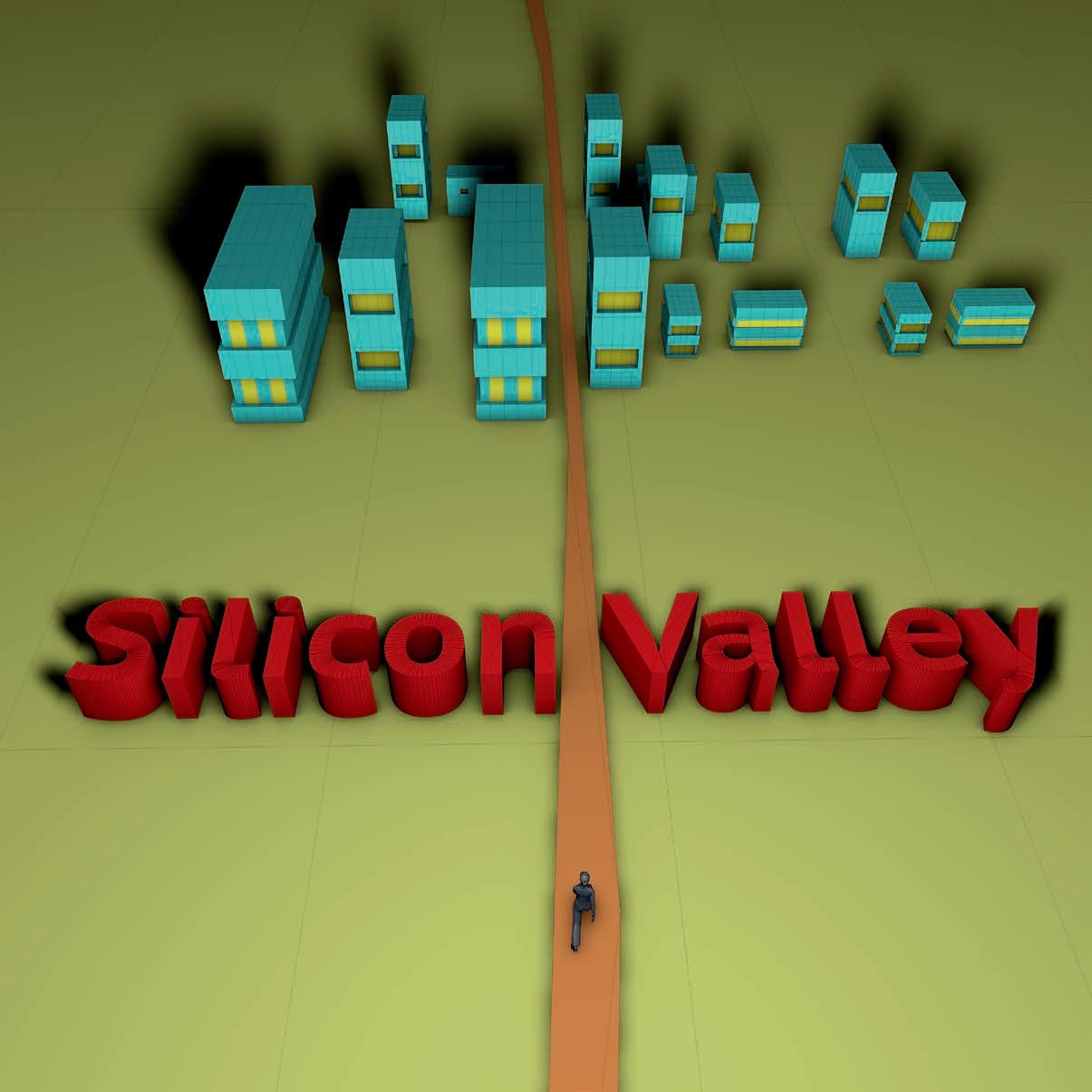
By Grace Chua
Hoda Eydgahi always thought she’d be a physician — so much so that she got her undergraduate degree in biomedical engineering. However, despite graduating a year early and as a valedictorian from Virginia Commonwealth University, she was initially rejected by medical schools. So she decided to apply to MIT’s Department of Electrical Engineering and Computer Science with weeks to go before the deadline — and got in.
It would prove to be the start of a “random walk” over the next twelve years, bouncing
she considered medical school again. Despite being accepted that year, Hoda decided to stay at MIT instead. “I went to a few medical school interviews. I was sitting in the waiting room and thinking about how everyone’s constantly competing with each other from day one. First it’s for a seat at the school, then after that it’s for residencies and fellowships — it’s competition, competition, competition.”
Hoda contrasted that with her first years at MIT, where she said she was “clobbered” but well-supported: “I was surrounded by incred-
“I was surrounded by incredibly smart people who are much more brilliant than I am, but everyone’s so humble. There’s no ego. All the grad students help one another out, the professors are helpful.”
back and forth from the theoretical to the applied, from raw startup entrepreneurship to scouting out new startups, and to where she is today — a data science manager at technologydriven fashion retailer Stitch Fix and an angel investor in early-stage startups.
On arriving at MIT, Hoda first completed a Master’s degree with MIT Media Lab Professor Rosalind Picard, developing wearable sensors and analytics for medical and health uses, such as monitoring stress and seizures. Still fascinated by biology and health technology,
ibly smart people who are much more brilliant than I am, but everyone’s so humble. There’s no ego. All the grad students help one another out, the professors are helpful — it makes for a very healthy environment.” What’s more, she felt she wanted a solid mathematical foundation for whatever came next. So, she went back to the classroom.
During her doctoral studies, Hoda was coadvised by LIDS Professor John Tsitsiklis and systems biologist Professor Peter Sorger of Harvard Medical School. She used Bayesian meth-
ods to study apoptosis, or programmed cell death. Hoda explains the significance of her work: malignant cancer cells don’t die when they should, and when their growth spirals out of control, that’s when cancers form. Understanding the normal cell death process can shed light on potential targets to treat cancer and help predict how cells will respond to different drugs. But many biological processes are hard to observe with current technology. “We used probabilistic models to determine which proteins interacted with which other proteins. If you think of it as a graph, each protein is a node. But the state of technology isn’t sophisticated enough to tell us whether protein A connects to protein B or protein C, so we used probability to infer the shape of that graph.”
While Hoda was doing her PhD, the “random walk” took yet another direction. Like many PhD candidates, Hoda had entrepreneurial aspirations and wanted to have an impact beyond her thesis. To explore this interest, she took a class in entrepreneurship at MIT’s Sloan School of Management and entered the annual MIT 100K Elevator Pitch competition with three of her classmates. Here they pitched the social enterprise Bluelight, which would enable low-income households in the Middle East to access microfinance savings accounts via their mobile phones — and won third place in the competition. The idea also won the grand prize in social enterprise at Harvard Business School’s New Ventures competition that spring.
Following the momentum of this success, Hoda spent her first year after graduation helping her three partners build Bluelight in Jordan, where one of the founders was from. But burnt out from the demands of building a startup as a first-time founder, she decamped to the San Francisco Bay Area.
In San Francisco she was drawn to another, now larger startup, Color Genomics. The company produces affordable genetic tests for ovarian and breast cancer, and brought Hoda back to her combined interests in medicine and data science. At the time, Color Genomics was a ten-person startup and Hoda joined as their first data scientist. She wore many hats and did production engineering on the fly, shepherded algorithms, and wrote software to facilitate the product’s launch in 2015.
All of these experiences — a strong foundation in probability and data science at LIDS, product launches at startups, and production software engineering — fed into Hoda’s next move as a data scientist for Stitch Fix.
Hoda was one of the earlier members of a team now consisting of over 100 data scientists. She explains how the company uses both personal stylists and algorithms to send customers appropriate picks, based on their preferences, geography, feedback and a host of other factors. It even uses algorithms to design clothing. “Data science is really stitched into the fabric
of Stitch Fix,” she says. “From the very beginning, we had a chief algorithms officer. That enables the data scientists to have a lot of scope and responsibility. We’re not just focusing on building algorithms, but also responsible for productionizing it.” Another thing she likes? “Diversity. [In data science] I’ve always been used to being one of the very few women in the room. But at Stitch Fix, that’s not the case.”
More than half the company is female and it was the only tech IPO led by a female CEO in 2017.”
The LIDS network, too, has been a “gift that keeps on giving,” she says. Many LIDS alumni end up in academia and research, and she’s been able to work with her LIDS colleagues’ graduate students to fill data science positions and other roles.
Today, Hoda seems to be at a happy medium. Beyond her day job, she is a scout for venture capital firm Sequoia Capital, looking out for exciting early-stage startups. She also enjoys hiking and cycling, travel, and photography in her spare time. Perhaps the “random walk” of Hoda’s career is not so random after all — as clearly, it’s trending toward success.
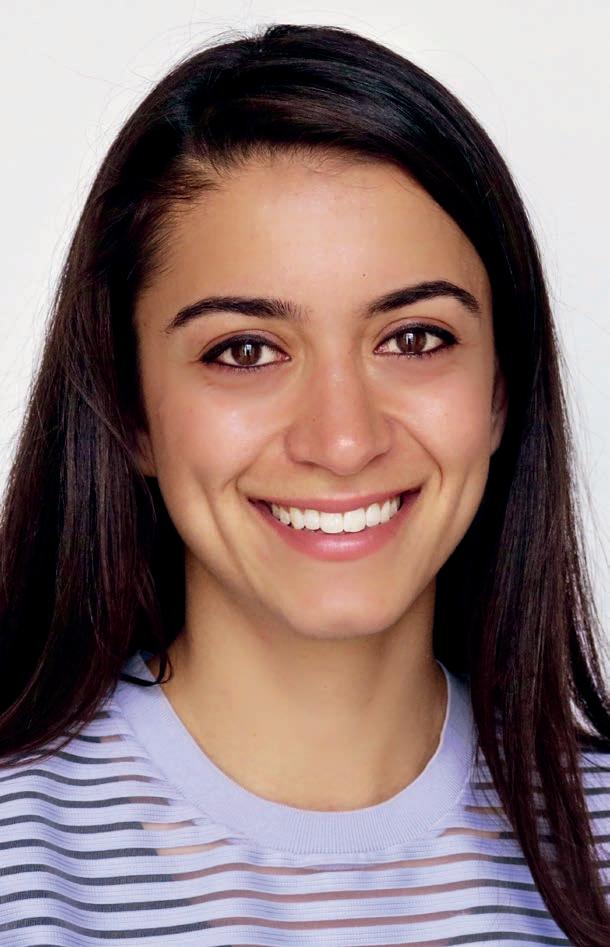

SIGNALS OF OPPORTUNITY
By Grace Chua
Stefania Bartoletti is interested in where you are.
More precisely, the LIDS postdoctoral researcher, who works with Professor Moe Win’s research group, the Wireless Information and Network Sciences Laboratory, is interested in how to locate people and things in places where GPS doesn’t work well or is denied — in an environment such as a museum or shopping mall, for example, where the physical structure of the building inhibits the ability of a wireless device to connect with GPS satellites.
Having an accurate estimation of where people and things are and of their pattern of movement has a multitude of uses, such as knowing which shops or exhibits are most popular, or understanding which spaces within a building might need more energy for air-conditioning.
To capture this information, says Stefania, “You exchange some signals directly with the person or thing you’re trying to locate — that’s called active target. Otherwise, you emit a signal that is reflected off a person or an object and you try to understand where they are located based only on the reflections — that’s called passive target.” Two examples of passive systems include anti-intruder alarm systems, which read the signals that bounce off an intruder to detect its presence, and radar systems, which read the signals that bounce off vehicles and drones to track their positions.
Stefania adds that while Professor Win’s group focuses on the theory and fundamental limits of active systems, she is adapting that research to study passive systems: How accurate can one be in an environment with passive systems? How much information can you extract from the signal you receive? She also seeks to understand which technologies are most suitable for passive systems. How might so-called ‘signals of opportunity,’ such as Wi-Fi or cellular signals already present for other uses, be exploited for location sensing?
Stefania is pursuing her research within the PATH project (PATH stands for PAssive Tracking of people and things for physical beHavior analysis) supported by a three-year Marie-Sklodowska Curie Fellowship from the European Commission, which runs through 2019. In addition to being a crucial paradigm for applications like crowd counting and flow monitoring, passive tracking also has implications for the Internet-of-Things, where this capability can be integrated into its infrastructure, making systems more versatile and accurate.
Professor Win notes the broad range of disciplines and methodologies involved in Stefania’s work, “Her project embraces communication theory, information theory, signal processing, statistical inference, and optimization, and it spans from the development of theoretical foundations to network experimentation via off-the-shelf radios. Stefania has a particular
aptitude for translating her developed theories into practical systems — she’s a terrific collaborator.”
Stefania originally hails from the sundrenched town of Cosenza in Calabria, at the instep of Italy’s ‘boot,’ and calls herself the black sheep in a family of medical doctors. However, it was her parents who encouraged her interest in mathematics, teaching her to sketch out math problems as a way of tackling them. At eighteen, she left for university in Ferrara, a college town near Bologna in the north.
“I studied what’s called information engineering – it’s a degree that encompasses computer science and electrical engineering. Learning about wireless communication was the first time I had seen many mathematical theories applied,” Stefania says. “I think wireless communication is one of the most interesting combinations of mathematics and statistics. When you receive a signal, you have to understand what was transmitted and it’s all based on probability and inference; you see all kinds of mathematical and statistical tools applied at different points.”
Learning about radar, too, was a revelation. “I learned that some planes have a layer of paint that makes them invisible to radar. That’s how I became interested in radar – it was the first time I had seen something ‘invisible’ that was a real thing,” Stefania laughs.
At the University of Ferrara, she studied with Professor Andrea Conti, a long-standing close collaborator of Professor Win and Research Affiliate at LIDS. It was he who suggested she look into MIT and LIDS, where Professor Win is an expert on the communications technologies she was interested in. “Stefania is a passionate and committed researcher,” says Professor Conti. “She has great potential — and I knew LIDS could be an excellent fit for her.” Professor Conti was not the only one to recognize Stefania’s potential. In 2016 she was named one of four Marconi Society Young Scholars, an award that recognizes young scientists and engineers around the world for their potential in communications and information technology.
Arriving in Cambridge, Stefania was astonished by MIT’s size and LIDS’ international, interdisciplinary culture. “Ferrara is a small city – the city center is smaller than the MIT campus,” she says. “And LIDS is my first experience with truly interdisciplinary activities. Everyone’s interested in what you do, and you work on different things but share ideas with each other. It’s amazing to go to all these seminars and tea talks; I think the future of science is interdisciplinary.”
Here, too, she feels more equipped with the mathematical, statistical, and experimental tools to apply localization technology to understanding people’s movement and behavior. She
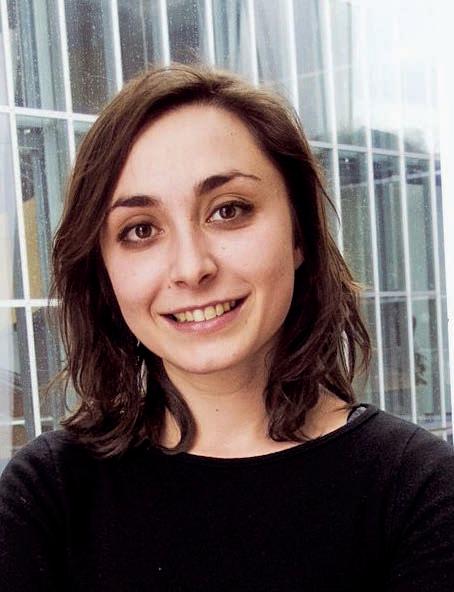
and her colleagues use sensor systems to test different algorithms, different sensor configurations, and how best to remove background noise and clutter to identify targets more clearly.
But LIDS doesn’t just equip scholars with a strong technical foundation, Stefania says.
“MIT has a very good technology licensing
office and they help you with a lot” – such as writing a patent and understanding what is patentable and what isn’t.
Stefania is conducting her PATH project research between both LIDS and the University of Ferrara. As part of her fellowship, she also plans to gain experience in industry before continuing with research, whether in a research institution or in corporate research and development. “I’d like to broaden my horizons in terms of the topics I study, too,” she adds.
Meanwhile, she keeps busy, picking up the guitar and serving on the board of MITaly, the campus Italian association. Whether for work or for leisure, she’s also traveled quite a bit: to Utah and Arizona, Florida, New York, Seattle and even Australia. “I never thought I’d go to the US or travel so much,” she marvels.
Her work and travels may have taken her far beyond the coasts of Southern Italy, but fittingly, it is clear that Stefania knows where she is, and where she is going.
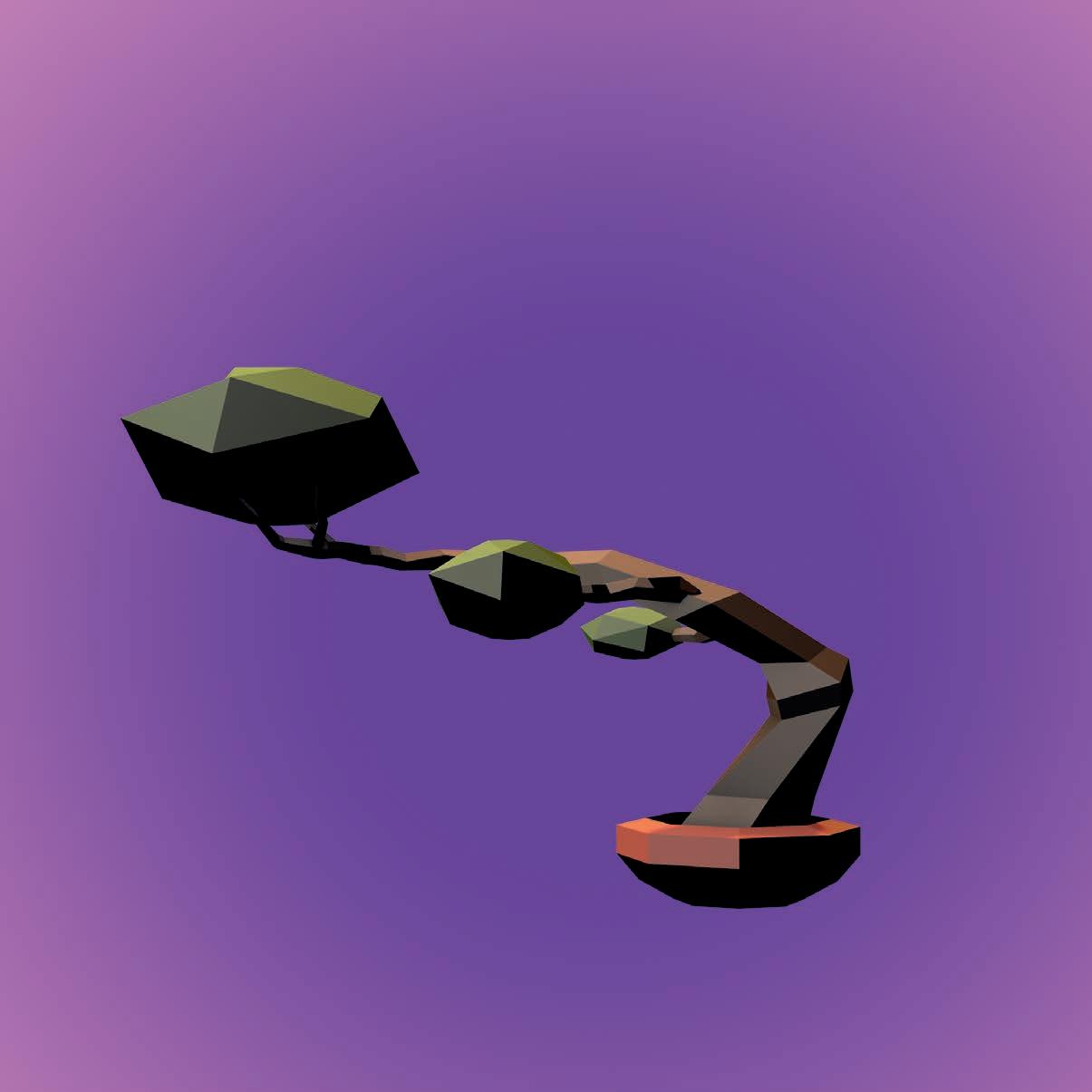
THE FOUNDER
By Grace Chua
Image: Poly by Google
LIDS alumni are a distinguished group. They include winners of top awards in the field, authors of classic texts — many of which are still being used today — and, outside of academia, a rich tradition of starting innovative and successful companies.
LIDS graduate student Qingkai Liang hopes to carry on this tradition in the months to come, turning his training and ideas towards a blockchain startup called Celer Network that he’s co-founding with three friends.
But let’s rewind to his five years at LIDS, and how his time here feeds into his path ahead.
Born in 1990 in the Chinese province of Anhui, not far west of the bustling metropolis of Shanghai, Qingkai was part of the world’s first generation to grow up with regular access to the internet. He found himself fascinated not only by online gaming platforms like World of Warcraft, but also with the communications and networking technologies underlying them, which allowed players to connect with each other and complete challenges together in realtime.
“My generation has experienced a lot of innovations in the networking field, and it’s an area that has really changed people’s lives,” he says. Observing those impacts led him to study information engineering at the renowned Shanghai Jiaotong University, where he graduated top of his class.
He was drawn to MIT, and to LIDS specifically, to continue his studies because of Professor Eytan Modiano’s work on communications networks. He has been part of Professor Modiano’s group since 2013, where he’s studied the fundamental performance limits of networks, including how much traffic a given network can support, and how to design efficient algorithms to reduce network latency – how long a bit of data takes to travel from one point in the network to another — in order to maximize both speed and accuracy of information transmission.
It’s the kind of foundational research that helps Qingkai and his colleagues better understand why the best or most commonly-used algorithms are robust, too. For example, the suite of communications protocols known as TCP/ IP (transmission control protocol/internet protocol), which ensures packets of data arrive at their destination in the correct order, has been in use for close to 40 years. However, Qingkai explains, these protocols were developed and first understood based on theoretical models in which network traffic arrivals, transmission rates, and other elements were stochastic — occurring in random patterns.
While these theoretical models work well for a substantial portion of network traffic, there are certain real-world conditions, such as hackers’ attacks on a network, in which traffic is not stochastic, but rather follows a known and predictable pattern. Qingkai studies such adver-
sarial phenomena. For instance, in what’s called a distributed denial of service (DDoS) attack, hackers direct a coordinated flood of requests, originating from many different sources, at a single host connected to the internet. Those requests overload a website so that legitimate users can’t get a response from it. In order to manage a network that may be hacked in such a defined way, both in terms of prevention and recovery, it is useful for theory to encompass stochastic and non-stochastic scenarios. Qingkai’s work centers on this idea — it aims to expand existing theoretical models to
while. “I think [the new models] will give us a sense of the scenarios we can tackle, so we don’t have to design algorithms that target some impossible scenario,” Qingkai says.
But 2018 is his last year at LIDS, and he is expected to graduate this summer. His next adventure: moving to the Bay Area to work at that startup.
The company focuses on secure, scalable, blockchain-based solutions for cryptocurrency payments. In a sense, the solutions his firm is
“Nowadays, we’re still using some of the tools that were developed at LIDS in the 1970s and 80s. It’s really cool to imagine how our work right now might influence the future, 20 or 30 years later.”
accommodate this kind of adversarial behavior, making the models more practical and more generalizable, ultimately optimizing network performance in different types of complex environments.
Those extended models and analytical tools can in turn be used to help build new, more robust network operation algorithms – and help determine when efforts to do this are worth-
developing bear certain similarities to communications networks. A communications network moves bytes and bits of data, and its capacity is its transmission rate – how many packets of data can be transmitted per second. Meanwhile, a blockchain database, shared by all participating nodes or computers, is used to enable frictionless value transfers (e.g., money transfers). Its capacity is the amount of money that is deposited, which fluctuates based on the
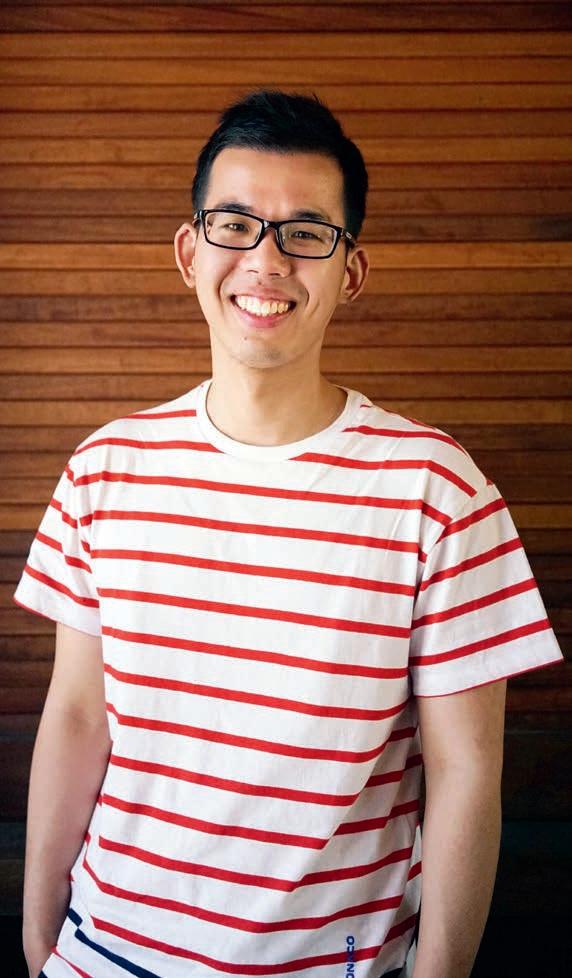
payments made. Due to the similarities, one of the key algorithms his startup developed is inspired by the BackPressure routing algorithm that was originally proposed for communication networks.
Qingkai feels his work at LIDS, especially on adversarial networks, has equipped him well to develop robust and secure algorithms for such scenarios. “The type of research LIDS is doing is more theoretically oriented, but it’s equipped me with logical thinking skills that readily apply, even though this application is in a totally different field.”
Beyond work, Qingkai also enjoys skiing (“In New England it’s the only thing to do during long winters.”), playing tennis, and learning about wine through wine-certification courses (and of course, practical tasting).
In the long term, he hopes his research, whether on adversarial networks or in the blockchain business, will have widespread impact, just as communications technologies have touched lives globally. “Nowadays, we’re still using some of the tools that were developed at LIDS in the 1970s and 80s. It’s really cool to imagine how our work right now might influence the future, 20 or 30 years later.”
Sound Bites: Richard (Rich) Lay
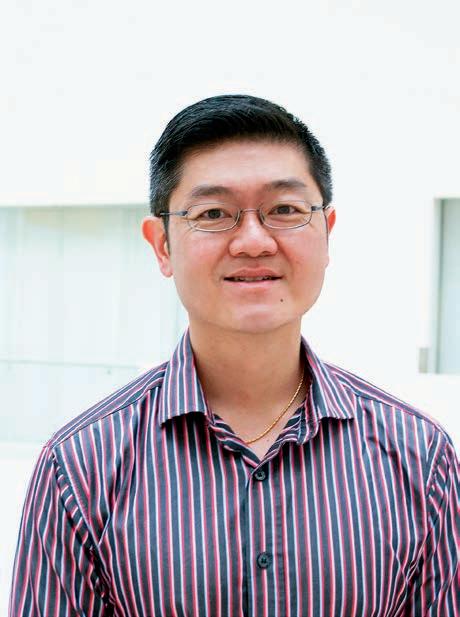
What do you do at LIDS?
What do you do at LIDS?
I’m the LIDS Administrative Officer, and I’ve been here since February this year. My role is to run the laboratory from a financial and administrative perspective, including managing the general budget, overseeing sponsored research funding, overseeing and directing LIDS staff, assigning space to personnel, etc.
What are your
responsibilities,
and what does a typical day look like for you?
I’m the LIDS Administrative Officer, and I’ve been here since February this year. My role is to run the laboratory from a financial and administrative perspective, including managing the general budget, overseeing sponsored research funding, overseeing and directing LIDS staff, assigning space to personnel, etc.
As the Administrative Officer, I wear multiple hats, so there is not really a typical day. If a principal investigator is submitting a proposal, either I, or my Financial Officer, will read through the solicitation and offer guidance to the PI. For staff, I actively think about how I can develop them professionally, and what types of training, support and advice they might need.
What are your responsibilities, and what does a typical day look like for you?
As the administrative officer, I wear multiple hats, so there is not really a typical day. If a principal investigator is submitting a proposal, either I, or my financial officer, will read through the solicitation and offer guidance to the PI. For staff, I actively think about how I can develop them professionally, and what types of training, support and advice they might need.
There are also many ad-hoc projects. Right now, I’ve been exploring the reconfiguration of the common lounge space. People have asked for more whiteboard space to talk about concepts and ideas and the general desire to increase collaborative interactions. Taking all input into account, we’ll select among several designs and I’ll work within our budget to determine the best use of money.
There are also many ad-hoc projects. Right now, I’ve been exploring the reconfiguration of the common lounge space. People have asked for more whiteboard space to talk about concepts and ideas and the general desire to increase collaborative interactions. Taking all input into account, we’ll select among several designs and I’ll work within our budget to determine the best use of money.
I’ve also spent time with my staff looking at process improvements for graduate student appointments, paperless records retention, space management, online file sharing solutions for administrative staff, among other things.
What brought you to MIT and LIDS?
I’ve also spent time with my staff looking at process improvements for graduate student appointments, paperless records retention, space management, online file sharing solutions for administrative staff, among other things. What brought you to MIT and LIDS?
My undergrad degree was biology/pre-med
My undergrad degree was biology/pre-med and I also worked as a stock trader in NYC, so my path to research and academic administration was certainly not by design. Fifteen
years ago, my wife and I came from NYC to Cambridge for her graduate studies and I have been working at MIT since then. I started out as a temp administrative assistant in Chemistry. After a year, I explored finance-related opportunities at MIT, and became a financial assistant and eventually a senior financial officer, in Chemical Engineering and Materials Science & Engineering. I was there for eight years before going to the Office of Sponsored Programs, where I was a special projects officer and then took on contract administrator work, reviewing grants and proposals.
and I also worked as a stock trader in NYC, so my path to research and academic administration was certainly not by design. Fifteen years ago, my wife and I came from NYC to Cambridge for her graduate studies and I have been working at MIT since then. I started out as a temp administrative assistant in Chemistry. After a year, I explored finance-related opportunities at MIT, and became a financial assistant and eventually a senior financial officer, in Chemical Engineering and Materials Science & Engineering. I was there for 8 years before going to the Office of Sponsored Programs, where I was a special projects officer and then took on contract administrator work, reviewing grants and proposals.
My time at MIT has been extremely rewarding and I am very happy to currently be at LIDS. I definitely feel that everything I’ve worked on at MIT throughout the years has brought me to a point where I have a solid foundation and where MIT-specific knowledge builds upon itself and will help me to be successful at LIDS.
My time at MIT has been extremely rewarding and I am very happy to currently be at LIDS. I definitely feel that everything I’ve worked on at MIT throughout the years has brought me to a point where I have a solid foundation and where MIT-specific knowledge builds upon itself and will help me to be successful at LIDS.
What do you like about your role at LIDS?
What do you like about your role at LIDS?
Speaking to my predecessor Debbie [Wright], I got the sense that everyone (faculty, researchers, students, and staff) at LIDS treats each other with a lot of respect and professionalism. This has certainly played out to be true! And because I’m responsible for so many different aspects of the lab, I feel vested in LIDS’ mis -
Speaking to my predecessor Debbie [Wright], I got the sense that everyone (faculty, researchers, students, and staff) at LIDS treats each other with a lot of respect and professionalism. This has certainly played out to be true! And because I’m responsible for so many different aspects of the lab, I feel vested in LIDS’ mission – what I’m doing directly impacts LIDS.
I also cannot say enough about the team of staff that we have at LIDS. Everyone works together so well to ensure that the lab runs smoothly.
What
sion – what I’m doing directly impacts LIDS. I also cannot say enough about the team of staff that we have at LIDS. Everyone works together so well to ensure that the lab runs smoothly.
do you do for fun, outside
of work?
I spend time with my wife and three daughters, aged 11, 9, and 6. My wife and I love engaging with our daughters in activities they enjoy, such as biking, reading, camping, or games.
What do you do for fun, outside of work?
I spend time with my wife and 3 daughters, aged 11, 9, and 6. My wife and I love engaging with our daughters in activities they enjoy, such as biking, reading, camping, or games.
I enjoy running and have completed a couple of half marathons and like to do 5ks when I can. Every so often, you might spot me runcommuting home from MIT to Arlington.
I enjoy running and have completed a couple of half marathons and like to do 5ks when I can. Every so often, you might spot me runcommuting home from MIT to Arlington.
I’m interested in learning foreign languages as well. As a child, growing up outside Chicago, I spoke Taiwanese and some Mandarin at home with my parents, and have a very basic knowledge of those languages. I took one year of Mandarin and Russian in college and am currently learning Italian, with the hope that my Italian will be sufficient for a planned trip!
I’m interested in learning foreign languages as well. As a child, growing up outside Chicago, I spoke Taiwanese and some Mandarin at home with my parents, and have a very basic knowledge of those languages. I took one year of Mandarin and Russian in college and am currently learning Italian, with the hope that my Italian will be sufficient for a planned trip!
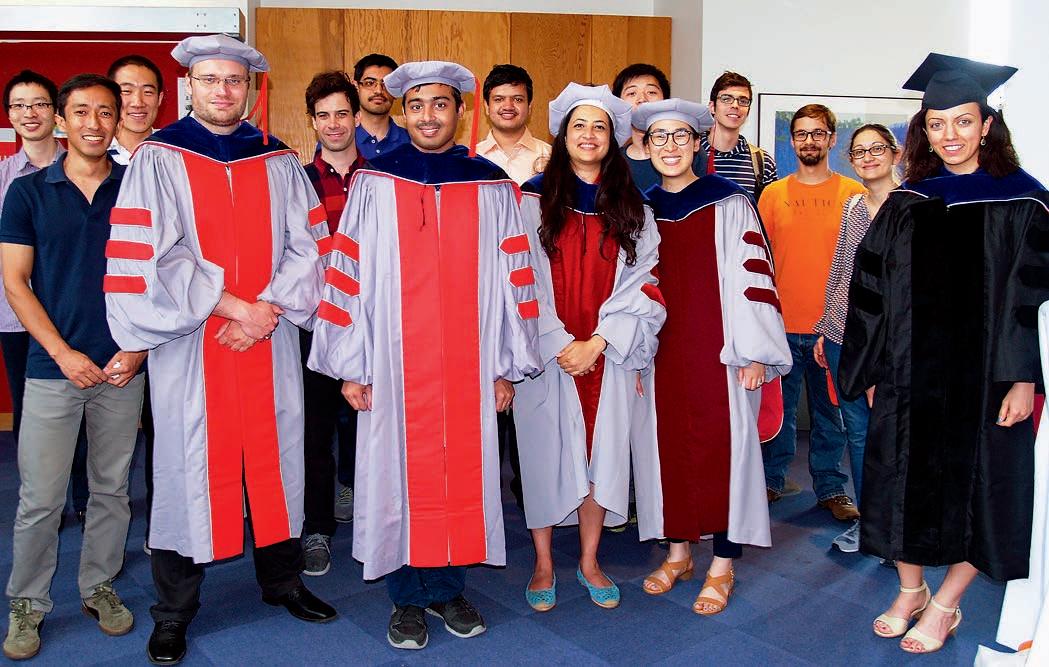
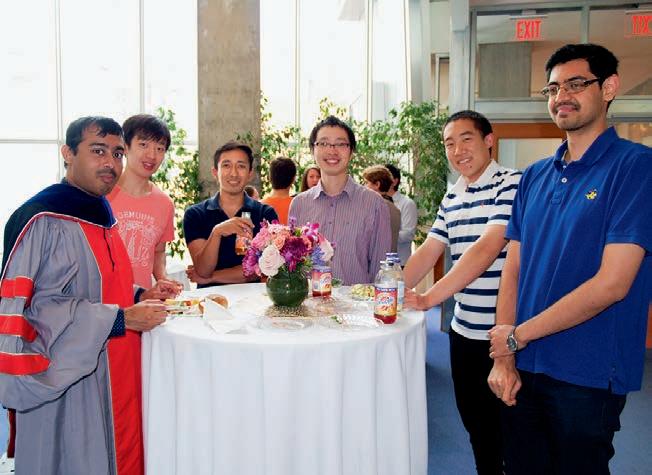
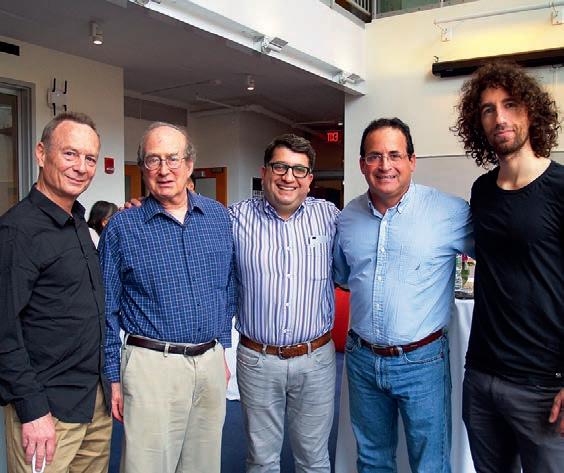
LIDS Commencement Reception
Congratulations to this year’s graduates!
PhDs received by:
Diego Cifuentes
Virgile Galle
Chong Yang Goh
Mina Karzand
Frank Permenter
Shreya Saxena
Abhishek Sinha
Amith Somanath
Thomas Stahlbuhk
Tianheng Wang
SMs or MEngs received by:
Abhishek Agarwal
Alec Anderson
Amado Antonini
Jasper Arneberg
Matthew Brennan
Tony (Bingfei) Cao
Bennett Cyphers
Yuzhou Gu
Laura Gustafson
Suhas Kowshik
Xianglin Flora Meng
Caroline Morganti
Alex Nordin
Rajeev Parvathala
Zara Perumal
Vinayak Ramesh
Akshay Ravikumar
James Siderius
Micah Smith
Ali Soylemezoglu
Corey Walsh
William Xue
Chenyang Yuan
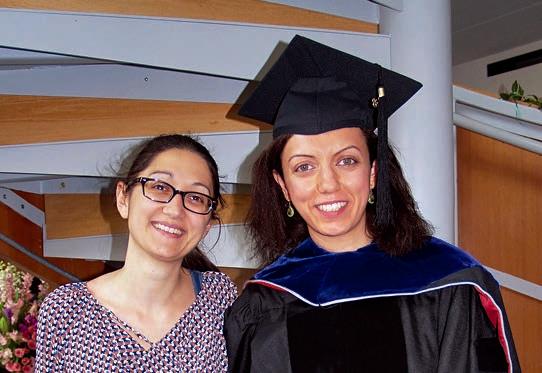
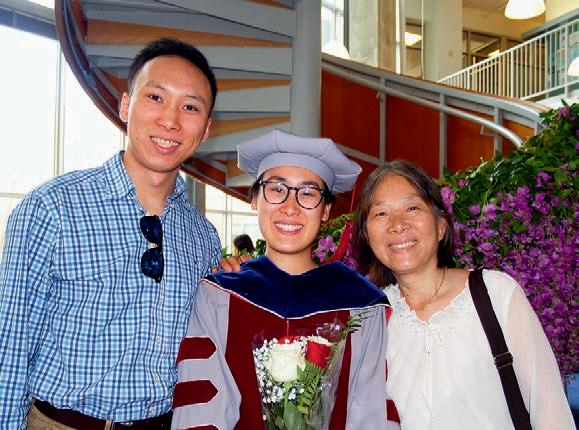
LIDS
Awards & Honors
Awards
Prof. Robert Berwick received the Jerome H. Saltzer Award for teaching from MIT’s EECS department.
Matthew Brennan , Prof. Guy Bresler, and their coauthor, RLE postdoc Wasim Huleihel, received a Best Student Paper Award at COLT 2018.
Prof. Luca Carlone, together with his coauthors, won the IEEE Transactions on Robotics King-Sun Fu Memorial Best Paper Award for, “On-Manifold Preintegration for Real-Time Visual-Inertial Odometry.”
Wenhan Dai received the 2017 Marconi Society Paul Baran Young Scholar Award.
Rupamathi Jaddivada was accepted into the 2018 cohort of Rising Stars in EECS. She is supervised by Prof. Marija Ilic.
Igor Kadota received the Aeronautics and Astronautics Graduate Teaching Assistantship Award, given annually to a graduate student “for conspicuous dedication and skill in helping fulfill a subject’s educational objectives.”
Profs. Sertac Karaman and Eytan Modiano, along with LIDS student Rajat Talak , received the 2018 ACM MobiHoc Best Paper Award for their paper, “Optimizing Information Freshness in Wireless Networks under General Interference Constraints.”
Prof. Eytan Modiano, together with his students Igor Kadota and Abhishek Sinha (now with Qualcomm), won a 2018 INFOCOM Best Paper Award for their joint paper: “Optimizing Age of
Information in Wireless Networks with Throughput Constraints.”
Prof. Eytan Modiano received an MIT Committed to Caring Award in recognition of his outstanding student advising and mentorship.
Antoni Rosinol , together with a collaborator, won the 2018 Siemens AI Hackathon. He is supervised by Prof. Luca Carlone.
Prof. Devavrat Shah , along with his students Anish Agarwal , Muhammad J. Amjad , and Dennis Shen , received the best poster award at the NIPS Time Series Workshop 2017 for their work titled “Time Series Forecasting via Matrix Estimation.”
Prof. Devavrat Shah won a Frank Quick Faculty Research Innovation Award from MIT’s EECS department.
Prof. John Tsitsiklis received the 2018 IEEE Control Systems Award. Prof. Tsitsiklis also received the Saul Gass Expository Writing Award from INFORMS, and the Ruth and Joel Spira Teaching Award from MIT’s EECS department.
Prof. Caroline Uhler received the Joseph A. Martore Award for Exceptional Contributions to Education from MIT’s Institute for Data, Systems, and Society (IDSS).
Prof. Moe Win received the IEEE LATINCOM Best Paper Award, IEEE Latin-American Conference on Communications, 2017 (co-authored with students Bryan Teague , Zhenyu Liu , and postdoctoral fellow Florian Meyer), as well as the IEEE International Conference on UbiquitousWireless Broadband Marconi-BISITE Best Paper Award, (co-authored with student
Wenhan Dai and colleague William C. Lindsey).
Prof. Win was also awarded the IEEE International Symposium on Wireless Communication System Best Scientific Contribution, for a paper coauthored with student Giovanni Chisci and colleagues Hesham ElSawy, Andrea Conti, and Mohamed-Slim Alouini.
Honors
Prof. Jon How was named an IEEE Fellow for his extraordinary research contributions to guidance and control of air and space vehicles.
Prof. Eytan Modiano was inducted into the University of Connecticut Academy of Distinguished Engineers.
Prof. Asu Ozdaglar was named head of the department of electrical engineering and computer science, effective January 1, 2018.
Prof. Pablo Parrilo was named a 2018 SIAM Fellow in recognition of his “foundational contributions to algebraic methods in optimization and engineering.”
Prof. Yury Polyanskiy was granted tenure by the department of electrical engineering and computer science.
Prof. John Tsitsiklis received an honorary doctorate from the Athens University of Economics and Business.
Prof. Caroline Uhler was promoted to Associate Professor without Tenure in the department of electrical engineering and computer science, effective July 1, 2018.
LIDS Seminars
2017-2018
Weekly seminars are a highlight of the LIDS experience. Each talk, which features a visiting or internal invited speaker, provides the LIDS community an unparalleled opportunity to meet with and learn from scholars at the forefront of their fields.
Listed in order of appearance.
Edmund Yeh
Northeastern University Department of Electrical and Computer Engineering
Constantinos Daskalakis
MIT
Department of Electrical Engineering and Computer Science
Stefano Soatto
University of California, Los Angeles and Amazon AI
Computer Science Department
Applied Science, Amazon Web Services
Vijay Balasubramanian
University of Pennsylvania Department of Physics & Astronomy
Alexandre Tsybakov
Center for Research in Economics and Statistics (CREST) – ENSAE
Statistics Laboratory
Noga Alon
Tel Aviv University Mathematics and Computer Science
Massimo Franceschetti
University of California, San Diego
Electrical and Computer Engineering Department
Kameshwar Poolla
University of California, Berkeley Department of Electrical Engineering and Computer Sciences
Babak Hassibi
California Institute of Technology
Department of Electrical Engineering
Alexandre d’Aspremont
École Normale Supérieure
Department of Computer Science
Stephane Lafortune
University of Michigan
Electrical Engineering and Computer Science Department
Amin Karbasi
Yale University
Department of Electrical Engineering
Claire Tomlin
University of California, Berkeley
Department of Electrical Engineering and Computer Sciences
Sewoong Oh
University of Illinois, Urbana-Champaign
Industrial and Enterprise Systems Engineering Department
Lizhong Zheng
MIT
Department of Electrical Engineering and Computer Science
Tauhid Zaman
MIT
Sloan School of Management
Pierre Pinson
Technical University of Denmark
Department of Electrical Engineering
Jose M F Moura
Carnegie Mellon University
Department of Electrical and Computer Engineering
P. R. Kumar
Texas A&M University
Electrical & Computer Engineering Department
Mustafa Khammash
ETH Zurich
Department of Biosystems Science and Engineering
Vivek Borkar
Indian Institute of Technology Bombay
Department of Electrical Engineering
2018 LIDS Student Conference
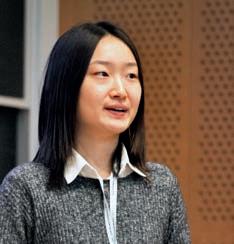
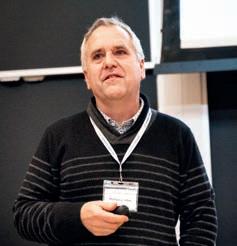
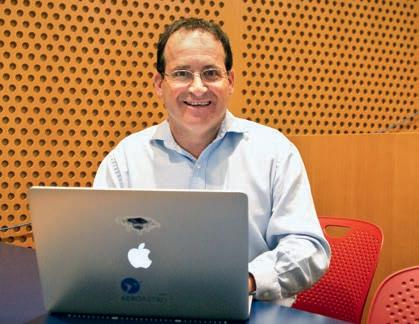
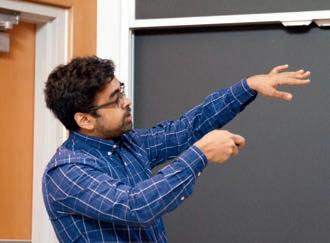
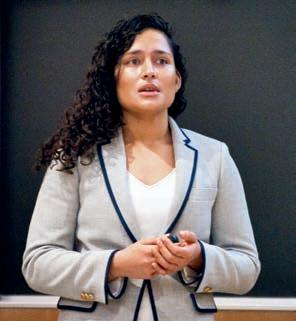
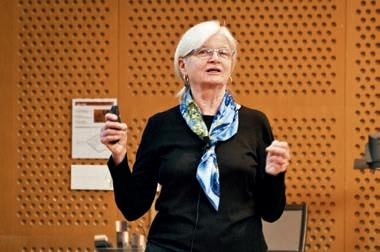

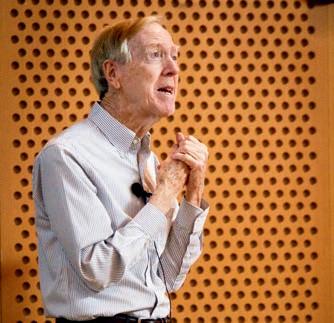
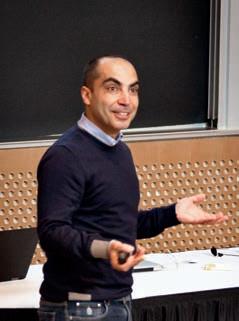
The annual LIDS student conference is a studentorganized, student-run event that provides an opportunity for graduate students to present their research to peers and the community at large. The conference also features a set of distinguished plenary speakers. The 2018 Student Conference marks 23 years of this signature Lab event.
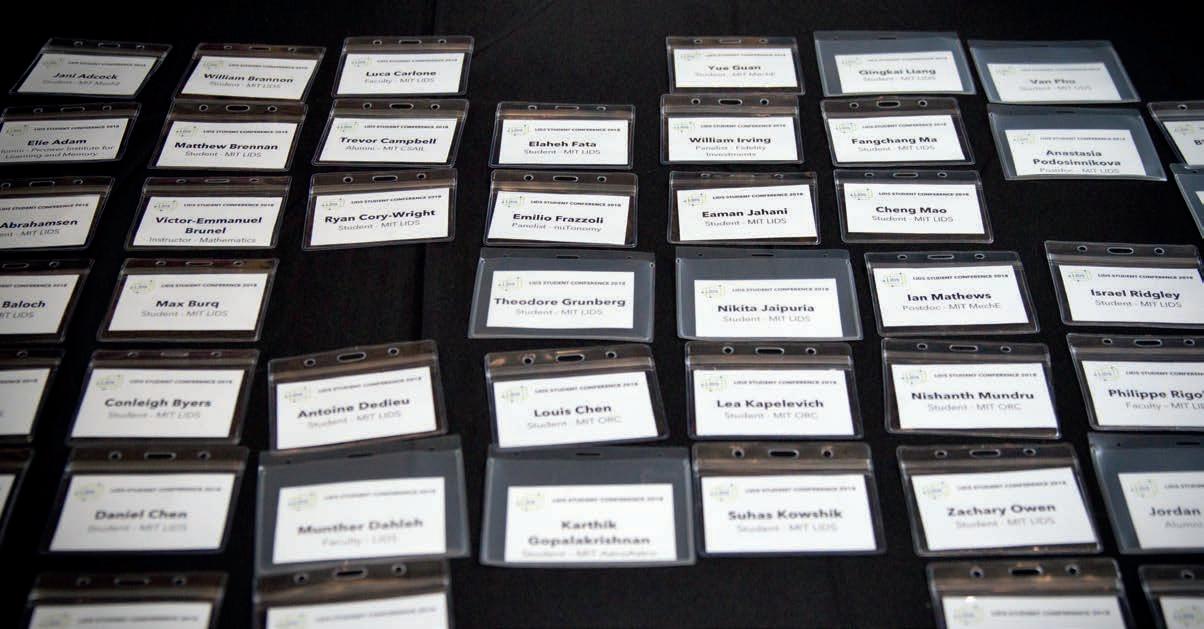

ORGANIZING COMMITTEE
SPEAKERS
Student Conference Chairs
Igor Kadota
Xianglin Flora Meng
Anurag Rai
Micah Smith Committee Members
Xinzhe Fu
Emily Meigs
Maryam Najafian
Manon Revel
Michael Schaub
Dennis Shen
Dogyoon Song
Igor Spasojevic
Vishrant Tripathi
Vasileios Tzoumas
Student Speakers
Muhammad J. Amjad
Jackie Baek
Joseph Emilio Gaudio
Sagar Indurkhya
Bomin Jiang
Sébastien Martin
Emily Meigs
Dheeraj Mysore Nagaraj
Zara Perumal
Amin Rahimian
Julia Romanski
Jordan Romvary
Thomas Sayre-McCord
Yee Sian
Thomas Stahlbuhk
Ezra Tal
Jennifer Tang
Vasileios Tzoumas
Rajan Udwani
Karren D. Yang
Chulhee Yun
Martin Zubeldia
Plenary Speakers
Prof. Francesco Borrelli
(University of California, Berkeley)
Prof. Michael I. Jordan
(University of California, Berkeley)
Prof. Nancy Lynch (MIT)
Prof. Gilbert Strang (MIT)
PANELISTS
Dr. Hoda Eydgahi (Stich Fix)
Prof. Emilio Frazzoli (nuTonomy)
Dr. Daniel Grunberg (Solver World)
Dr. William Irving (Fidelity Investments)
Dr. Aradhana Narula-Tam (MIT Lincoln Laboratory)
LIDS Community
LIDS had a fantastic 2017-2018 academic year, full of intellectual engagement and achievement, but also many activities that make our community a special place. It is our students who often play a key role in organizing these activities.
Along with the LIDS Student Conference Committee, we have three additional committees in which students take the lead: the LIDS Social Committee, the LIDS & Stats Tea Talks Committee, and the LIDS Mentoring Committee. Throughout the year they have organized many great social events (including lunches, picnics, Friday afternoon snacks, and sports events), a popular weekly series of informal research presentations, and several terrific mentoring events, including a career panel, a faculty life panel, and an entrepreneurship seminar.
Our thanks to all of the students, faculty, and staff who made these a success! We’d like to thank here, in particular, the student organizers:
LIDS Social Committee
Igor Spasojevic
Julia Romanski
Suhas Subramanya Kowshik
LIDS Mentoring Committee
Igor Kadota
Zied Ben Chaouch
Anish Agarwal
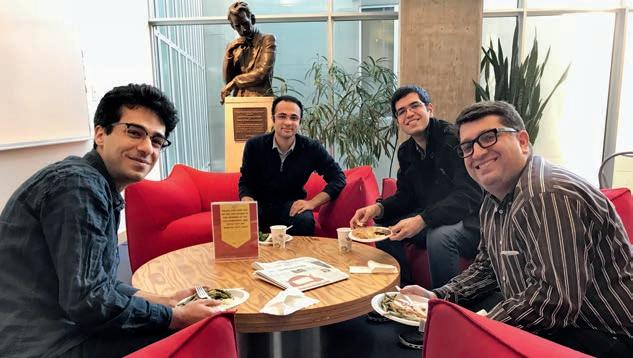
LIDS & Stats Tea Talks Committee
Cristian-Ioan Vasile
Anish Agarwal
Jennifer Tang
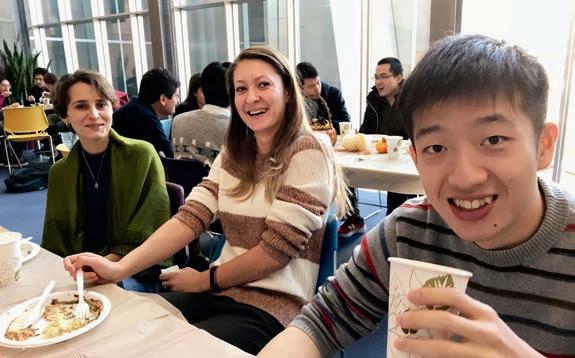
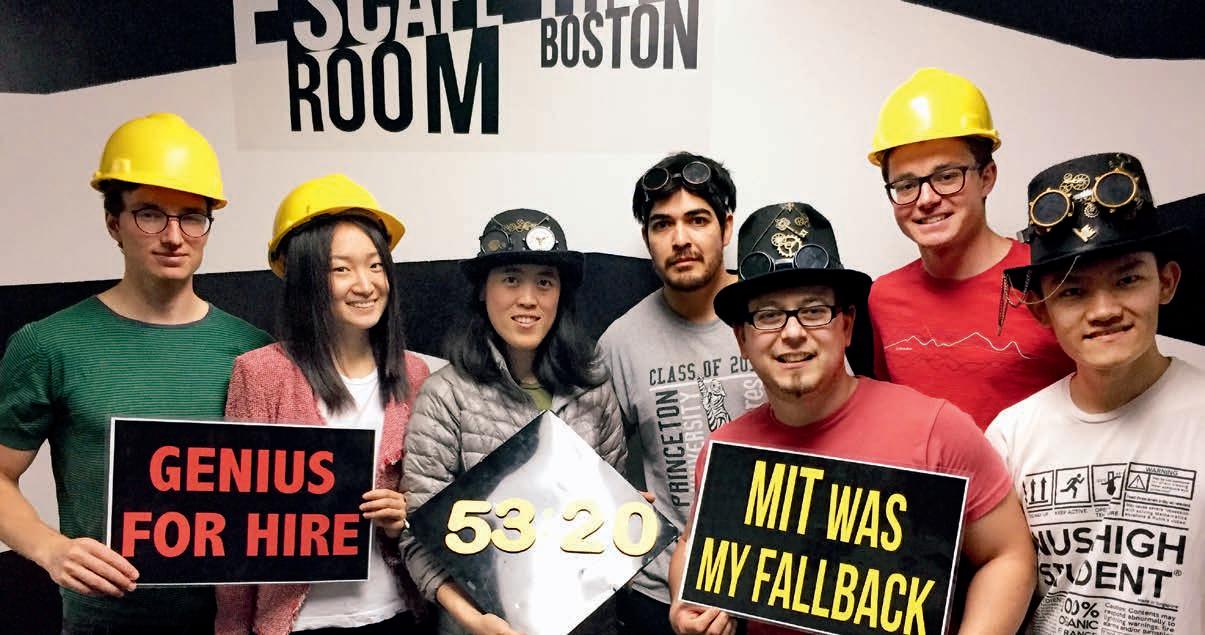
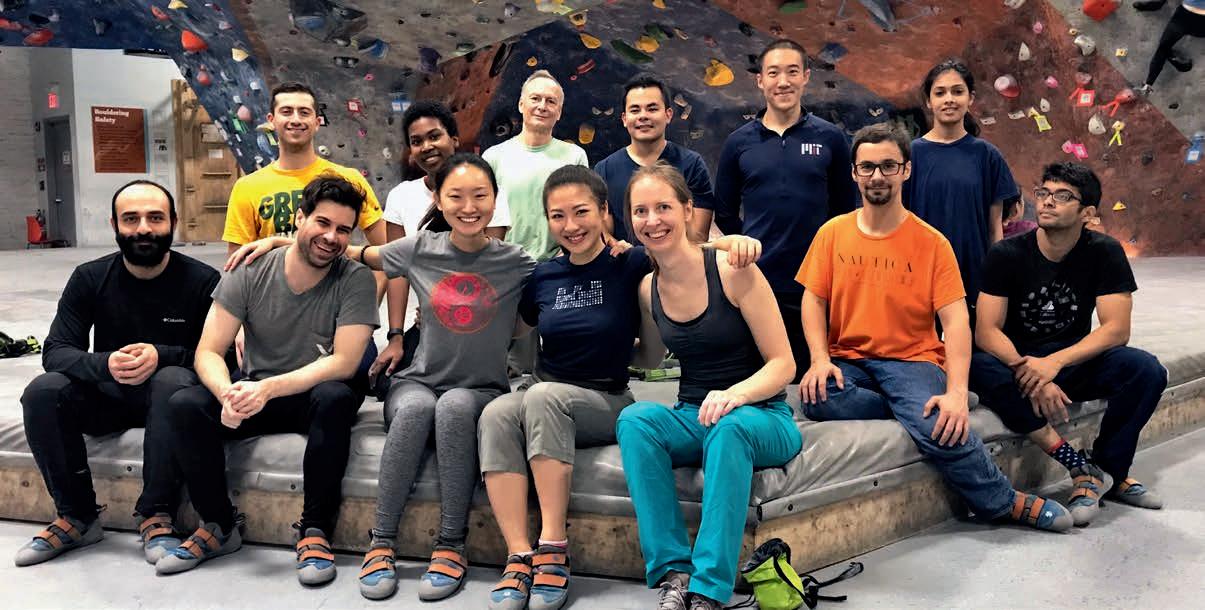
NEW LIDS FACULTY AND PIs
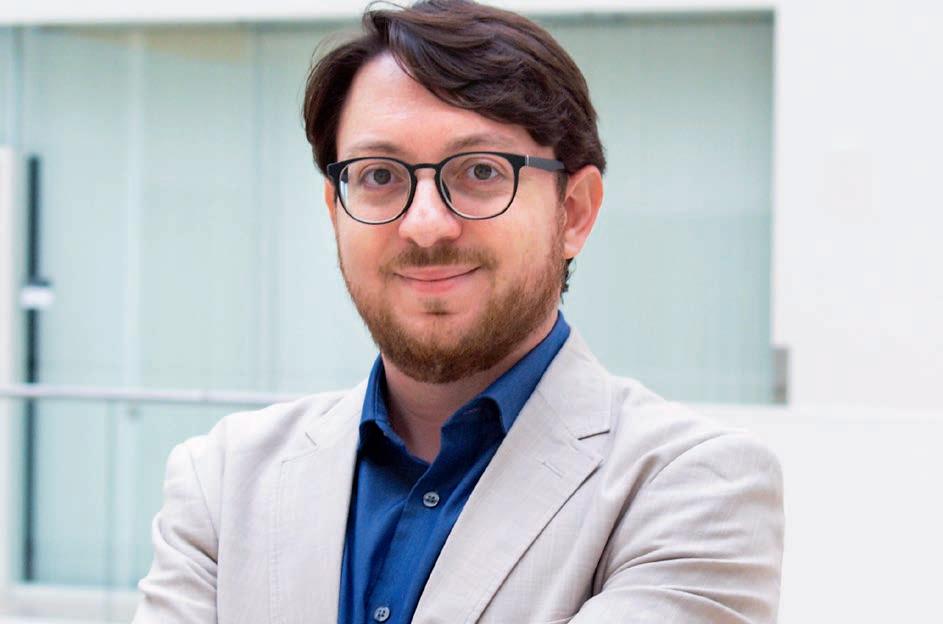
Luca Carlone
Luca Carlone started as the Charles Stark Draper Assistant Professor in the Department of Aeronautics and Astronautics and as a Principal Investigator in LIDS in 2017, after being a postdoctoral associate (2015) and a research scientist in LIDS (2016). He received his PhD in Mechatronics from the Polytechnic University of Turin in 2012. The main goal of his research is to enable superhuman perception and world understanding on mobile robotics platforms operating in the real world, such as micro aerial vehicles and self-driving cars. Towards this goal he leverages theoretical tools from nonlinear estimation, probabilistic inference, and optimization. He is the recipient of several Best Paper awards in his field.
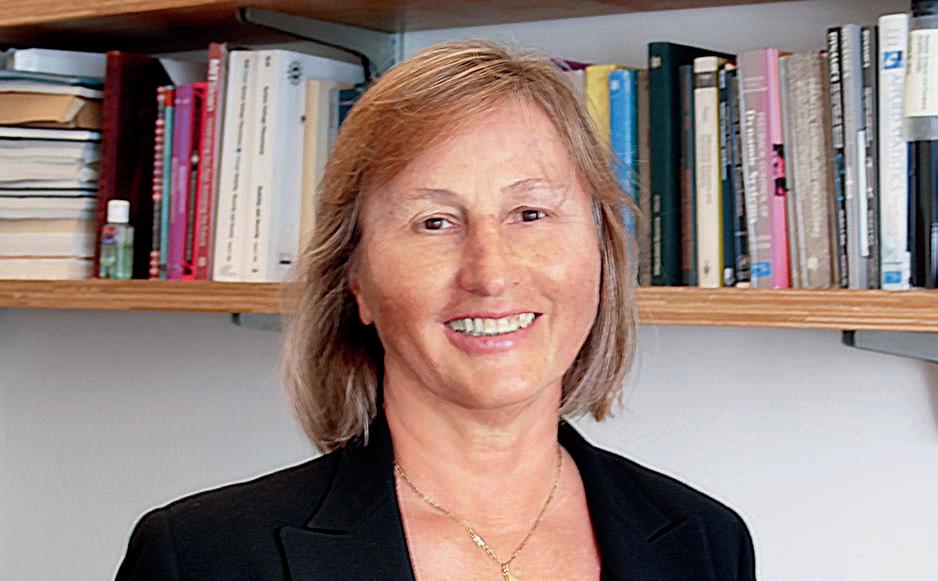
Marija Ilic
Marija joined LIDS as a Senior Research Scientist in August 2018. In addition to being an IEEE Life Fellow, she has held many prestigious positions over the course of her career, including Associate Professor with tenure at the University of Illinois Urbana-Champaign, Professor with tenure at Carnegie Mellon University, and NSF Program Director. More recently, she has been a Senior Staff member at Lincoln Laboratory, while also holding Visiting Professor and Research Scientist appointments with IDSS and LIDS. Marija is a world leader in the area of electric power systems. Her work involves systems, optimization, and control, and is combined with a deep knowledge of the real-world aspects of power systems.
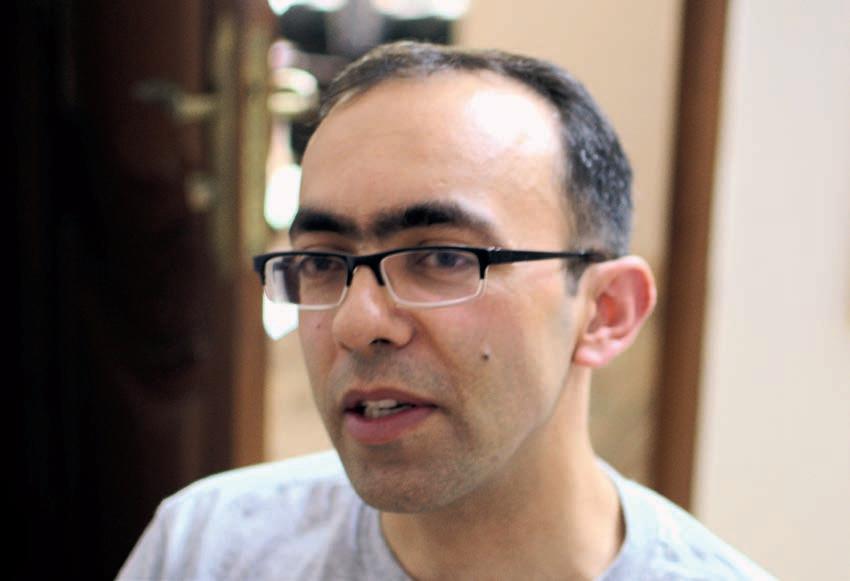
Suvrit Sra
Suvrit joined MIT’s Department of Electrical Engineering and Computer Science as an Assistant Professor, and LIDS as a Principal Investigator, in January 2018. Prior to this, he was a Principal Research Scientist at LIDS. Previously, he was a Senior Research Scientist at the Max Planck Institute for Intelligent Systems, and a visiting faculty member at UC Berkeley and at Carnegie Mellon University. Suvrit’s research bridges a variety of mathematical topics including optimization, matrix theory, differential geometry, and probability with machine learning. He is interested in all aspects of mathematical optimization, especially for machine learning. His work has won several awards at machine learning conferences, as well as the 2011 SIAM Outstanding Paper Award, and faculty research awards from Criteo and Amazon.
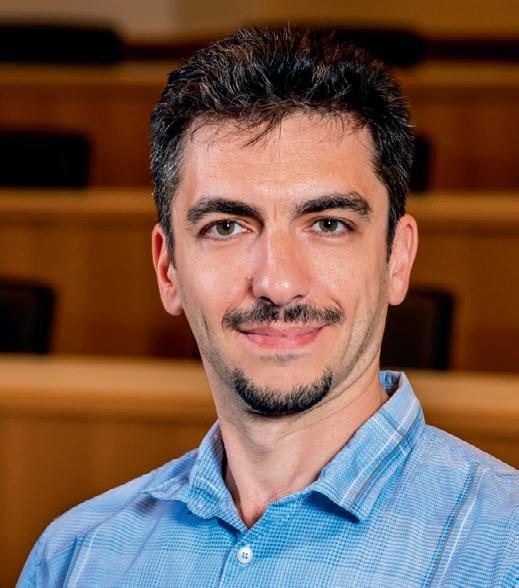
Alexander “Sasha” Rakhlin
Sasha is an Associate Professor in MIT’s Department of Brain and Cognitive Sciences and IDSS, and is a Principal Investigator at LIDS. His research is in machine learning, with an emphasis on statistics and computation. Sasha received his bachelor’s degrees in mathematics and computer science from Cornell University, and doctoral degree from MIT. He was a postdoc at UC Berkeley EECS before joining the University of Pennsylvania, where he was an associate professor in the Department of Statistics and co-director of the Penn Research in Machine Learning (PRiML) center. He is a recipient of the NSF CAREER award, IBM Research Best Paper award, Machine Learning Journal award, and COLT Best Paper Award.
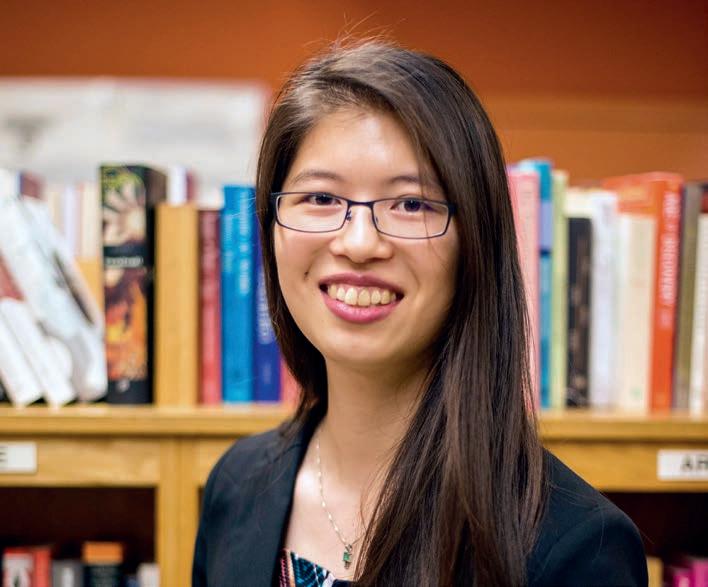
Cathy Wu
Cathy works at the intersection of machine learning, optimization, and largescale societal systems. Her recent research focuses on mixed autonomy systems in mobility. She received her B.S. and M.Eng in EECS at MIT in 2012 and 2013, and a Ph.D. in EECS at UC Berkeley in 2018 under the supervision of Professor Alexandre Bayen. She has received numerous fellowships, best paper, and teaching awards, and she serves as the Chair of the Interdisciplinary Research Initiative within the ACM Future of Computing Academy. She will be joining the Reinforcement Learning Group at Microsoft Research as a postdoctoral researcher Fall 2018. Cathy will be joining LIDS and MIT in July 2019, as an Assistant Professor in CEE and IDSS.
http://lids.mit.edu/ www.facebook.com/lidsmit
